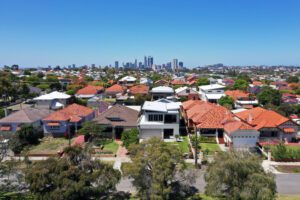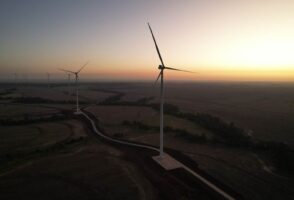Energy minister Chris Bowen’s boost to the Capacity investment Scheme (CIS) is a game-changer, expanding federal investment to underwrite a massive target of 32GW of new storage and renewable infrastructure, a huge step-change in national decarbonisation ambition and to be roundly applauded.
This is exactly the kind of bold, landmark federal policy and investment ambition we need to rapidly transform Australia’s energy market whilst ensuring grid reliability and restoring energy affordability.
The CIS is a federal initiative designed to underpin the deployment of dispatchable renewable energy and storage capacity across Australia, offsetting any reliability gaps as the country transitions from fossil-fuel based to clean energy.
It underpins delivery of the critically important federal renewable energy target of 82% by 2030 and drive energy prices down sustainably and permanently. Importantly, the CIS explicitly excludes methane gas peaking power plants.
Nine gigawatts of the 32GW planned tenders announced today will be dispatchable capacity, supporting an excellent value-for-money ‘contracts for difference’ scheme based on six-monthly tenders over the next 4 years will underwrite 23GW of variable renewable energy (VRE), i.e. wind and solar.
For context of the significance and scale of this initiative, the National Electricity Market (NEM) currently has an installed capacity of 64GW (71GW including the 7GW in the West Australian South West Interconnected System (SWIS)).
Australia currently has 31GW of on-grid renewables and battery energy storage systems (BESS) (51GW including rooftop solar), so this one initiative alone will double our installed on-grid zero-emissions capacity, even as we continue to add more than 3GW a year of additional rooftop solar.
The federal government will fund the entire investment of this ambitious new scheme.
The states will be required to pledge to accelerate deployment of firmed zero-emissions energy in order to access the expanded scheme, thereby unlocking tens of billions of investment into clean energy. Those states that do not commit will miss out, with the excess capacity reallocated to those states that join in.
CEF’s premise is that finance is a fundamental driver of decarbonisation. Financial frameworks that catalyse, incentivise and support investment in firmed renewables are crucial enablers of energy transition, and the CIS is an excellent case in point.
This initiative will bring low cost, zero-emissions replacement capacity on line to enable the on-time closure of end-of-life high emissions, low reliability coal plants.
Importantly, it will help facilitate the mothballing of end-of-life coal clunkers such as Origin Energy’s Eraring power station in NSW, Australia’s biggest, scheduled for 2025, while enabling stand-by capacity to ensure supply.
We have long argued that the federal government must roll out its CIS at speed and scale if we are to achieve their ambitious and now doable 82% renewables by 2030 target.
Doing so will deliver the profound benefits of cheap, deflationary, domestic zero-emissions firmed renewable energy to Australians crushed by the concurrent energy, climate and cost-of-living crises.
This domestic energy crisis was caused by the failure of the previous government to produce a logical climate and energy policy – a necessary condition to create market confidence sufficient to invest in replacement capacity ahead of clearly known coal plant closures.
Minister Bowen’s dramatic scaling of the CIS today helps ensure Australia’s energy security and independence, insulating us against shocks like the fossil fuel price hyperinflation of the last two years triggered by Russia’s war on Ukraine.
It also helps underpin our capacity to “electrify everything”, both at the residential level, and in industry in conjunction with the Safeguard Mechanism.
We have the potential to deploy our abundant zero-emissions energy to power processing and manufacture of our critical minerals and other energy transition materials onshore, and export “embodied decarbonisation”. This is key to realising Minister Bowen’s vision to establish Australia as a renewables superpower.
We now need to see complementary policy levers brought into play to support this momentum.
While the CIS is centred on utility-scale firmed renewables, equally critical is a policy and investment focus to further accelerate deployment of distributed energy resources (DER) such as rooftop solar, heat pumps, behind the meter storage in homes and businesses, community batteries, ‘batteries-on-wheels’ (EVs) and and virtual power plants (VPPs) – decentralised networks of power generation and storage.
CEF’s recent report on the NSW electricity system found that DER can deliver half of the new generation capacity needed to replace retiring coal power stations, with no grid delays.
As a next step, we call on Minister Bowen to extend the life and increase the cap of the Small-scale Renewable Energy Scheme – which creates a financial incentive for small businesses to install renewable energy systems – from 100kW to 1,000kW. This relatively simple adjustment would immediately lift commercial and industrial deployments of DER, which in turn would boost system reliability and energy affordability for all.
Key to a comprehensive transformation of the electricity sector is a comparable effort from the states. We call on the states to use this Friday’s Energy and Climate Change Ministerial Council in Perth to work in partnership with their federal counterpart to seize the transformative opportunity of this stepped-up CIS and massively accelerate their renewable energy buildout and grid decarbonisation goals.
An excellent example is the joint announcement yesterday by Minister Bowen and NSW Energy Minister Penny Sharpe of successful bids under the existing Scheme in NSW, totalling 1,075MW of new capacity, representing $1.8bn in new energy infrastructure. The six winning projects are:
- BlackRock’s Akaysha Energy’s Orana Renewable Energy Zone battery, located in Wellington in central-west NSW, with 415MW / 1,660MWh 4-hour storage capacity
- AGL Energy’s Liddell battery in Muswellbrook, Hunter Valley, with 500MW / 1,000MWh 2-hour storage capacity
- Iberdrola Australia’s Smithfield, Sydney, battery of 65MW / 130MWh capacity
- And three separate virtual power plants through Enel X Australia’s demand response project totalling 95MW capacity with minimum dispatch duration of 2 hours.
All successful projects are targeting commercial operations by December 2025.
When combined with existing projects under development, like the 850MW/1680MWh Waratah Battery, this is entirely sufficient to accommodate the phased closure of the Eraring coal fired power plant around the proposed date of August 2025.
That is consistent with AEMO’s 2023 Electricity Statement of Opportunities (particularly if AEMO’s overly aggressive electricity demand growth forecasts are discounted for ongoing energy efficiency savings, and more DER is incentivised).
Medium term reliability will be further underpinned by a separate NSW government tender Round 3 seeking 950MW of new wind and solar capacity, and 550MW of long duration storage (at least eight hours), before the end of this year, as flagged by Renew Economy.
We anticipate today’s announcement by Minister Bowen of the expansion of the CIS will see a pipeline of new projects several orders of magnitude larger, further accelerating the transition to affordable energy.
Fortunately, the legacy of the previous mob – the hyperinflationary energy price crisis – is being permanently resolved.
In the third quarter of calendar year 2023 wholesale electricity prices across the NEM averaged just A$76 per megawatt hour (MWh), down 68% from A$236/MWh in the same quarter last year (and down from the $300/MWh peak in the second quarter of calendar year 2022 that precipitated the total NEM market shutdown for a week in June 2022).
Year-to-date 2023 wholesale electricity prices are down more than 50% year-on-year. When combined with anticipated forward curve reductions that will result from this additional new firming and renewables capacity over the next 3-5 years, it is entirely predictable that the default market offer for retail electricity prices will be down double digits from 1 July 2024, and down further from 1 July 2025.
The CIS replaced the Morrison/Taylor LNP government’s “CoalKeeper” capacity mechanism, designed to prolong the operation of unreliable, end-of-life, polluting, volatile – and expensive – coal-fired power generation.
When announced last December, the federal government said the Scheme would drive around $10 billion of investment in clean dispatchable power. This announcement will see an about four-fold lift in enabled clean energy investment across Australia. It cannot come soon enough.
Tim Buckley is director of Clean Energy Finance. Annemarie Jonson is chief of staff at CEF










